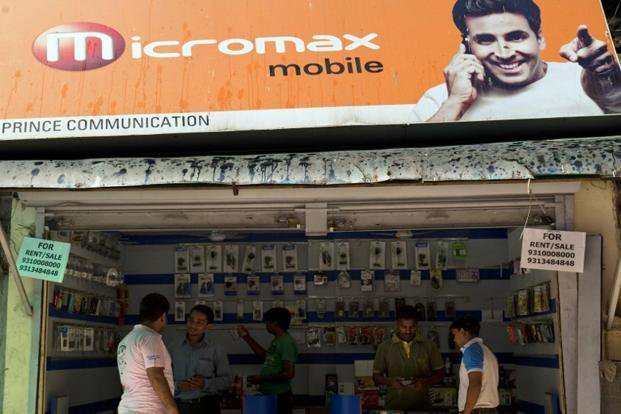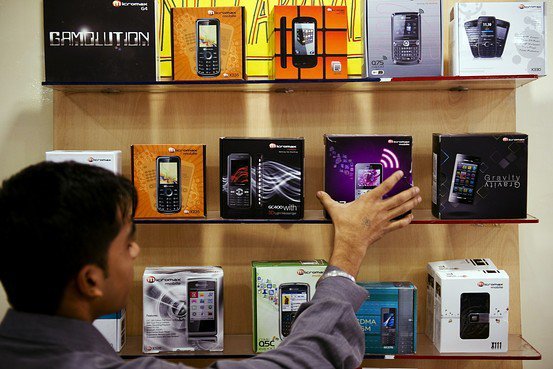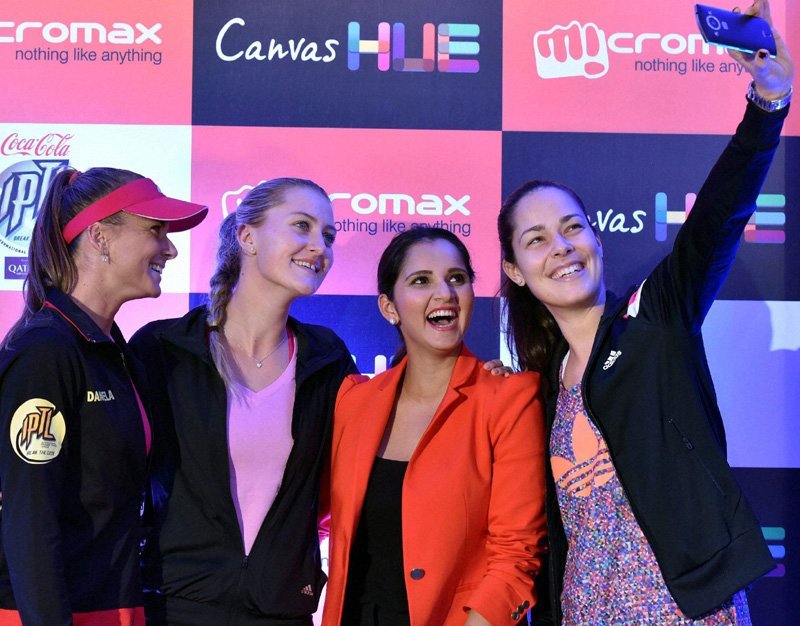A year ago, Micromax vaulted past Samsung Electronics Co Ltd to become India’s leading smartphone brand. Today, its market share has nearly halved, several top executives have resigned, and the company is looking for growth outside India.
In Micromax’s slide to second place is a tale of the promise and peril of India’s booming but hyper-competitive smartphone industry. India is the world’s fastest-growing smartphone market. Shipments of smartphones jumped 29 percent to 103 million units last year.
Rapid growth has helped nurture a crop of local brands, led by Micromax, that outsourced production to Chinese manufacturers. Now, as Samsung rolls out more affordable phones, the same Chinese factories are entering the Indian market with their own brands, depressing prices and forcing Indian mobile makers to rethink their strategies.

“What the Indian brands did to the global brands two years ago, Chinese phone makers are doing the same to Indian brands now, and over the next year we see tremendous competition for Micromax and other Indian smartphone makers,” said Tarun Pathak, analyst at Counterpoint Research in New Delhi.
Management Tensions
Micromax, which was founded in New Delhi by four partners in 2000 but only began selling mobile phones in 2008, built its market share by working with Chinese manufacturers such as Coolpad, Gionee and Oppo to offer affordable phones quickly. In 2015, it launched more than 40 new models.
In 2014, the founders brought in outside managers to lead the company at a time when Micromax was challenging Samsung to become the largest mobile phone maker in India.
But tensions arose soon after between founders and the newly hired executives, six former executives told Reuters. These conflicts undermined Micromax’s attempts to raise funds for expansion, say former executives. Last May, Alibaba walked away from a mooted $1.2 billion purchase of a 20 percent stake, citing a lack of clarity on growth plans, according to one executive involved in the discussion. Micromax co-founder Vikas Jain said in an interview with Reuters this week that the company and Alibaba disagreed on a future roadmap.
Alibaba declined to comment.

Former executives said the lack of fresh funding undermined a proposal by the new executives to move Micromax’s research and design operations, which had previously been outsourced, in-house. The move was intended to help Micromax differentiate itself from generic Android clones.
“We hired about 80-90 people in Bangalore to do in-house software and design, but with no money from the investors and little interest from the founders, that team fizzled away and that office has been partially shut down now,” said a former executive.
After Alibaba walked away, Micromax struggled to attract other investors who would have been key to Micromax’s plan to invest in software R&D and hardware design. The company was forced to scale down the in-house R&D project, a top executive involved in the fundraising plan said.
At least five senior executives have resigned since November. The latest was Vineet Taneja, chief executive since 2014, who quit last week.

“The Whole Industry Is Suffering”
Meanwhile, Chinese handset makers, including Coolpad and Oppo, to which Micromax outsources its manufacturing, were sharpening their focus on India. Samsung, too, began to introduce more affordable models there.
In 2015, Chinese brands doubled their market share to 18 percent, according to Counterpoint Research, taking away business from Indian budget phone makers such as Micromax, Intex, Lava and Karbonn. Indian brands’ market share fell from 48 to 43 percent last year.
“Right now the whole industry is suffering because of the Chinese phones,” Jain told Reuters. “We have seen large write-downs happening on inventory in China, and that inventory is being passed on to India at a markdown.”
Chinese phone makers including LeEco, Xiaomi and Lenovo have also partnered with e-commerce companies including Amazon India and Flipkart to sell phones directly to consumers, saving on distribution and sales and reaching new online shoppers directly.
In the final quarter of 2015, Micromax’s shipments fell by 12.1 percent, against growth of 15.4 percent for the sector, according to industry tracker IDC. Micromax’s share of the smartphone market fell to 13 percent in the fourth quarter from 22 percent at its peak in 2014, according to IDC.
Micromax, which is privately held and does not disclose financial information, maintains it is profitable. Founders Jain, Rahul Sharma, Rajesh Agarwal and Sumeet Arora still control about 80 percent of the company. They have raised nearly $90 million from investors in the last five years.
Facing competition from both Samsung and inexpensive Chinese phones, Micromax plans to increase production in India. Jain said that the company plans to double local manufacturing output from 1.5 million units to about 3 million units a month over the next six to 12 months.
Already a top-10 brand in Russia, Micromax is seeking a partner to help it expand further outside India and diversify into televisions and tablets.
“Micromax needs to diversify geographically and also needs to diversify product lines,” said Neil Mawston, executive director of the global wireless practice at London-based research consultancy Strategy Analytics. How well it manages that diversification, Mawston says, will be key.
(Feature image source: Reuters)

















